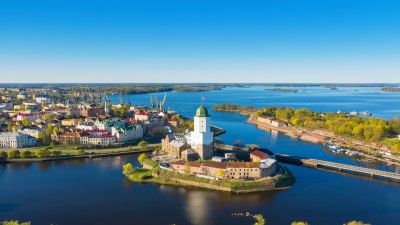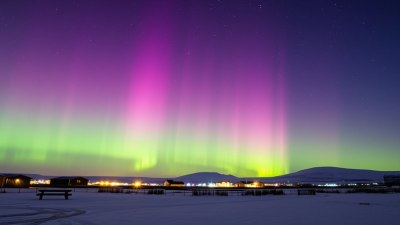Everything You Need to Know About Electricity in Finland
Explore the comprehensive guide to electricity in Finland, including sources, infrastructure, and regulations.

Electricity is an essential component of modern life, enabling everything from basic household activities to complex industrial processes. Finland's electricity system is robust, efficient, and increasingly focused on sustainability. This article aims to provide an in-depth overview of electricity in Finland, covering its generation, distribution, consumption, and the regulatory framework surrounding it.
Electricity Generation in Finland
Finland's electricity generation landscape is diverse and evolving. The country relies on various energy sources to ensure a stable supply of electricity. The major sources of electricity generation in Finland include nuclear power, hydroelectric power, wind energy, and biomass. As of recent years, Finland has made significant strides in integrating renewable energy into its grid, aligning with the European Union's climate goals.
Nuclear Power
Nuclear power is a cornerstone of Finland's electricity generation, contributing approximately 30% of the total electricity supply. The country operates several nuclear reactors, with the Olkiluoto and Loviisa plants being the most prominent. The Olkiluoto 3 reactor, which began operations in March 2022, is the largest nuclear reactor in the Nordic countries and has boosted Finland's electricity production capabilities significantly, offering a low-carbon alternative to fossil fuels.
Renewable Energy Sources
Finland has been a front-runner in adopting renewable energy technologies. Hydroelectric power, generated from the country’s numerous rivers and lakes, accounts for about 15% of electricity production. Wind energy has seen exceptional growth, with installed wind power capacity increasing markedly over the past decade. As of 2023, wind turbines generate approximately 25% of Finland's electricity, with further expansion planned in the coming years.
Biomass and Other Renewable Sources
Biomass, often sourced from forestry and agricultural activities, plays a vital role in Finland's energy strategy. It is used in combined heat and power plants, particularly in rural areas. Other renewable sources, such as solar energy, are also gaining ground, supported by various incentives and technology advancements that promote small-scale installations.
Electricity Transmission and Distribution
Finland's electricity transmission system is managed by Fingrid, a state-owned company responsible for the high-voltage grid. The transmission network connects various generation sources to consumers across the country. In addition to interconnections with neighboring countries, such as Sweden, Norway, and Estonia, Fingrid ensures reliability and efficiency, facilitating smooth electricity flows and balancing supply and demand.
Regional Electricity Markets
The Finnish electricity market operates within the larger Nordic electricity market, which allows for cross-border trading of electricity. This integration enhances competition and ensures a more resilient energy system. Market participants can trade electricity through various exchanges, including Nord Pool, which provides a platform for spot and futures trading. As market dynamics evolve, Finland continues to prioritize transparency and fairness in its electricity pricing.
Electricity Consumption Trends
Electricity consumption patterns in Finland vary across different sectors, with the residential, industrial, and commercial sectors playing significant roles. The country has witnessed a steady increase in electricity demand, fueled by population growth, urbanization, and the electrification of transportation. Finnish households are also becoming more energy-efficient, reflecting a broader trend toward sustainability.
Energy Efficiency Initiatives
Finland places a strong emphasis on energy efficiency across both public and private sectors. Government programs and initiatives promote energy-saving technologies and practices, encouraging citizens to reduce their energy consumption. Energy audits and grants for energy renovations are examples of measures designed to improve efficiency and reduce overall electricity demand.
Electric Vehicles and Charging Infrastructure
The rise of electric vehicles (EVs) is transforming energy consumption patterns. Finland supports this transition through a growing network of EV charging stations and incentives for EV adoption. As of 2023, the government has set ambitious targets to increase the share of electric vehicles on the road, further intensifying the need for impactful electricity supply and distribution strategies.
Electricity Pricing and Tariffs
Electricity prices in Finland are influenced by various factors, including generation costs, market demand, and regulatory policies. Consumers can choose from different pricing plans, including fixed-rate and variable-rate tariffs, which are determined by market conditions. Additionally, the government ensures that electricity prices remain fair and competitive, protecting consumers from undue market fluctuations.
Regulatory Framework
The electricity sector in Finland is governed by a comprehensive regulatory framework that aims to promote sustainability, competition, and security of supply. The Energy Authority (Energiavirasto) supervises the electricity market, ensuring compliance with domestic and EU regulations. This includes monitoring market dynamics, overseeing pricing practices, and implementing policies to promote renewable energy and energy efficiency.
Future Outlook for Electricity in Finland
Looking forward, Finland's electricity landscape is poised for transformation. The country is committed to reducing greenhouse gas emissions and achieving carbon neutrality by 2035. This ambitious goal will require continued investment in renewable energy infrastructure, advancements in energy storage technology, and the further integration of digital solutions in the electricity sector. With ongoing innovations and policy support, Finland is well-positioned to lead the charge toward a sustainable energy future.
Electricity in Finland is characterized by a strong commitment to sustainability, resilience, and innovation. From its diverse generation sources to its regulatory framework, the Finnish electricity system exemplifies best practices in managing energy resources effectively. As the demand for electricity grows, Finland is adapting its strategies to meet this challenge while proactively addressing climate change. The journey toward a sustainable energy future is well underway, and Finland stands as a testament to the potential of renewable energy and efficient electricity systems.











